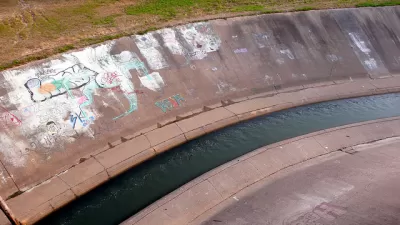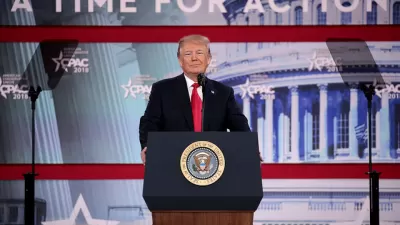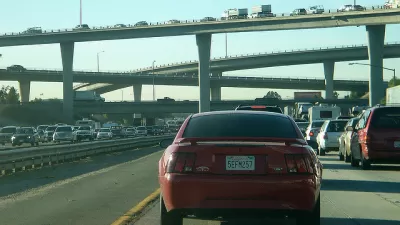The federal government is basically asking for matching funds from states and localities to fund infrastructure projects.

The hints, leaks, and more hints about the contents of the Trump Administration's long-promised infrastructure plan, which will be pitched in some headlines as a $1.5 trillion spending plan, finally bears fruit today.
According to multiple sources briefed by the White House yesterday, the Trump Administration is releasing a $1.5 trillion plan that relies mostly on states and local agencies to cover that large sum.
"The plan calls for investing $200 billion in federal money over the coming decade to entice other levels of government and the private sector to raise their spending on infrastructure by more than $1 trillion to hit the administration’s goal of $1.5 trillion in new funding over 10 years," report John Wagner and Heather Long.
The article also reveals two more pithy details: the Trump Administration "is open to a new source of funding to cover the federal share," including raising the federal gas tax. On a non-funding related matter, the plan "also seeks to dramatically reduce the time required to obtain environmental permits for [infrastructure] projects."
An article on The Hill released the full text of the infrastructure plan early Monday morning.
For additional coverage of the infrastructure plan, reported after a White House briefing with reporters on Sunday, see articles in the New York Times and NPR. Bloomberg also picked up the news today.
FULL STORY: Trump’s big infrastructure plan has a lot of detail on everything but how to pay for it

Study: Maui’s Plan to Convert Vacation Rentals to Long-Term Housing Could Cause Nearly $1 Billion Economic Loss
The plan would reduce visitor accommodation by 25,% resulting in 1,900 jobs lost.

Alabama: Trump Terminates Settlements for Black Communities Harmed By Raw Sewage
Trump deemed the landmark civil rights agreement “illegal DEI and environmental justice policy.”

North Texas Transit Leaders Tout Benefits of TOD for Growing Region
At a summit focused on transit-oriented development, policymakers discussed how North Texas’ expanded light rail system can serve as a tool for economic growth.

San Diego County Sees a Rise in Urban Coyotes
San Diego County experiences a rise in urban coyotes, as sightings become prevalent throughout its urban neighbourhoods and surrounding areas.

Los Angeles County Invests in Wildfire Recovery for Parks, Trails, and Open Space
The $4.25 million RESTORE Program supports the recovery of parks, trails, and open spaces damaged by the January 2025 wildfires through targeted grants that promote community healing, wildfire resilience, and equitable access to nature.

Nevada Bills Aim to Establish Home Insurance Assurance Amidst Wildfire Risk
Republican sponsor hopes the FAIR plan would be “a true market of last resort.”
Urban Design for Planners 1: Software Tools
This six-course series explores essential urban design concepts using open source software and equips planners with the tools they need to participate fully in the urban design process.
Planning for Universal Design
Learn the tools for implementing Universal Design in planning regulations.
Alamo Area Metropolitan Planning Organization
City of Santa Clarita
Institute for Housing and Urban Development Studies (IHS)
City of Grandview
Harvard GSD Executive Education
Toledo-Lucas County Plan Commissions
Salt Lake City
NYU Wagner Graduate School of Public Service





























